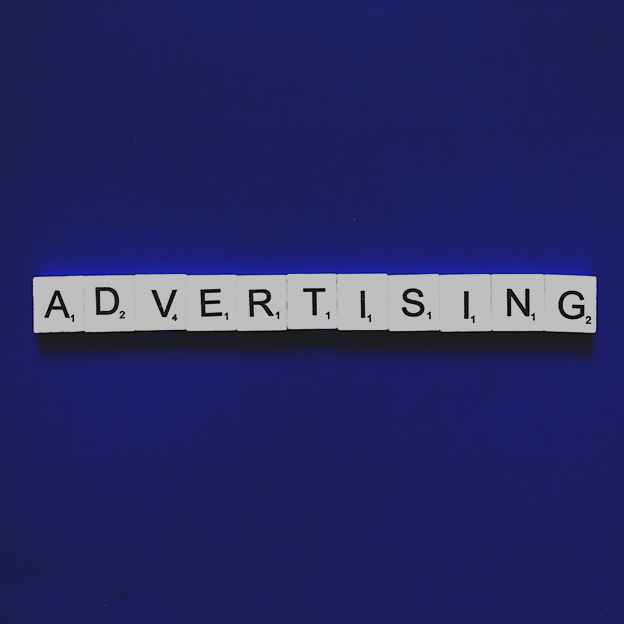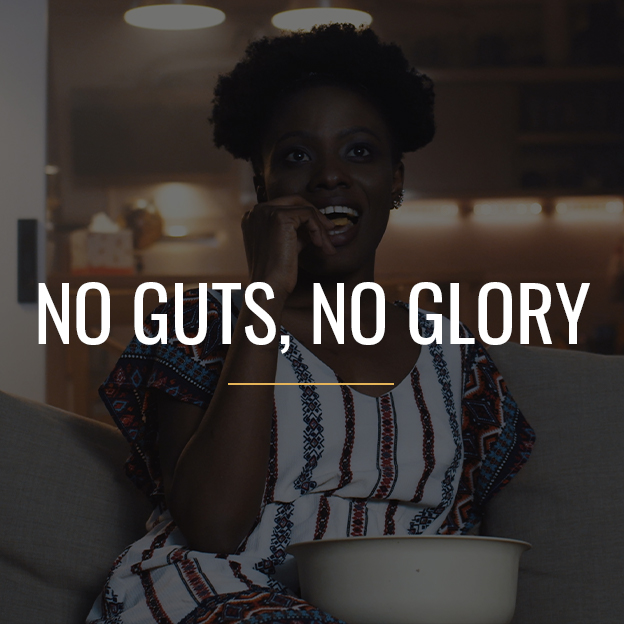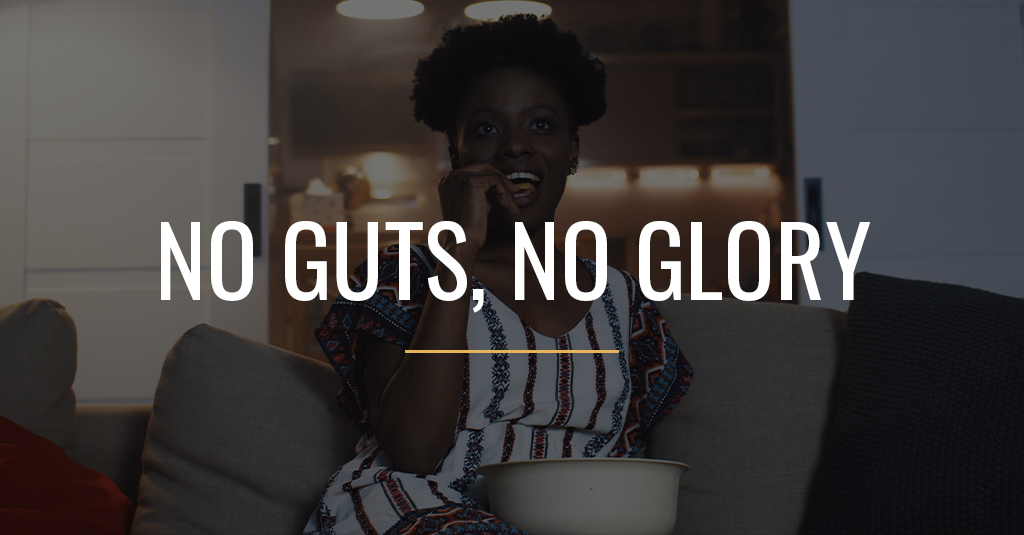Category: Rob’s Desk
From Rob’s Desk: Unsuccessful Strategic Plans Outnumber Successful Ones


If you’re just starting to develop your strategic plan for 2022, you’re cutting it a little close. Don’t get me wrong, I’m not trying to add to your stress. I’m just being completely real with you.
You should really start this thing a little earlier next year.
Ready for a little more honesty? Most strategic plans fail.
By most, I mean 67%, according to statistics. What does failure look like? It doesn’t mean brands disappear or go out of business. It means they don’t reach their goals, which means they’re also not achieving their potential — some, by a longshot.
It could manifest in different ways, across different departments. It could also mean a company continually faces the same challenges, year after year.
Will the strategic plan you developed months ago fail this year? You should know by now, as the end of the year approaches.
As an entrepreneur, I’ve been there. And as someone who works with business executives, owners and leaders to develop practices that improve revenue generation and operational efficiencies, I see it happen to others every day.
It means you’re not alone. It helps to know that.
Most business leaders don’t even believe the strategic plans they develop will succeed. Isn’t that a shame? I’ll answer that — yes, it is. Maybe that’s why some (not naming names or pointing fingers here) wait until the last minute to develop one.
Just a theory.
Before you crumple up that plan you’re working on and toss it in the trash, please know that strategic plans don’t fail for lack of vision or ingenuity. They fail, most often, due to a missing link down the line.
When you look at a strategic vision, imagined at 30,000 feet above the daily operations of any given business, it begins as a crystal clear mission but it can become increasingly grainy as it finds its way to the ground. Adoption and execution become the missing links.
It’s why, when I work with CEOs and other business leaders, we unpack everything. We work top to bottom. We get inside an operation, sift through every department, examine internal and external communications, analyze data and take a deep dive into process. It’s the only way to target pain points, uproot inefficiencies and carve out new paths that lead to revenue growth, efficiencies and allow an organization to actualize its potential — from a financial and operational perspective.
What if your company could make a bigger impact? What if it could make a more meaningful one?
It all starts with the strategic plan, developed with support from actionable data, and it isn’t finished until it is disseminated throughout an entire organization — from customer service to IT to HR, finance, marketing and beyond.
Everyone, everywhere needs to be on board in the same way leadership is. If they are, that vision that can become grainy maintains its clarity.
Need guidance with your strategic plan? We’ll help, no matter what time of year it is.
From Rob’s Desk: Tough Times? Don’t Toss Your Anchor


It’s easy for me to think of marketing as a journey. Or, better yet, an expedition. And for the sake of analogies, imagine we’re on the water right now, emerging from a trying season filled with loss and struggle and walking a tightrope of hope that we experience a sustained recovery with few earth-shattering hiccups.
That’s where we’re at. And the best advice I can give any business owner is, even if the wind changes and the water gets choppy again, don’t drop your anchor. Don’t do it. Even if it feels right and safe.
From a marketing perspective, with a view from the leadership suite, putting a stop to forward progress in the face of tough times does nothing but stifle success. Instead of dropping anchor, adjust the sails.
Why? Because it’s effective.
I’ve seen it time and again. Those who pull back on marketing efforts during troubled times sit still. That’s what an anchor does — it chains you to one spot. But those who double down and ride out the storm find themselves closer to where they need to be when it’s over.
It makes perfect sense, in the real world and even with this maritime analogy.
At WHYFOR, the marketing agency I founded just before the Great Recession, we watched this analogy play out in real time during the height of the first and second waves of the COVID-19 pandemic. And while we all have high hopes that the coast is clear, cases are climbing again and restrictions are being reinstated in different ways across the country.
We’re not out of this yet.
What that means is business owners can take actionable advice from the very recent past and apply it to their strategies moving forward, and that number-one strategy should include a commitment to continuing to move forward at all. Because, during tough times it can be a tough thing to do.
I don’t remember saying it was easy. I’m just saying it’s necessary.
Three of our clients experienced phenomenal years in 2020 by following that advice, and I can’t be accused of being biased on this one. Since we only implement strategies at WHYFOR that can be measured, the outcomes are truly, objectively successful.
One, a luxury developer, worked with us to develop more targeted messaging and saw a 40% increase in leads and a 248% increase in SEO traffic. Another, a telepsychiatry provider, partnered with us to adjust messaging, launch a new website and institute a strategic external communications strategy, and their growth is outpacing even bold forecasts.
And a third, a fine art event, responded to a need for social distancing by launching an online marketplace — only to go on and experience the most robust year of the event’s 30-year history.
These aren’t anecdotes. These are case studies in strategic development and implementation. It could also be said that these are case studies in how to adjust your sails when you really want to drop anchor.
Results don’t happen at a standstill. So, even if the tide turns, don’t touch your anchor.
To better understand how you may need to adjust your strategic marketing approach, schedule a complimentary 30-minute consultation.
From Rob’s Desk: But Why Is Revenue The Problem?


Cash flow. Finances. Liquidity. Whatever name you give it, most business owners keep at least one eye, at all times, on revenue. It’s part of almost every conversation. It’s pivotal to success. It’s a perpetual holy grail. And most times it seems there isn’t enough of it.
It also might be the answer I hear most often when I ask business leaders about their most pressing challenge.
Here’s the thing about revenue though — it’s codependent on so many other factors. It doesn’t stand alone. Revenue by itself isn’t a thing. It is unequivocally influenced by at least one of five other challenges that every business or brand faces.
So instead of asking how to solve revenue challenges, the real question to ask is this: Why is revenue a problem?
Yes, revenue could be a problem. But there’s always a reason for it. And that reason is the actual root. Revenue is just a symptom of something bigger.
This is the part of the conversation where most business leaders I’m working with release one of those exaggerated exhales, because as part of the proprietary business system we’ve developed at WHYFOR — known as H.A.L.O. — things are starting to unfold in front of them.
H.A.L.O., which stands for Holistic Approach Leveraged Outcomes, dissects the six potential challenges every business or brand faces, singles out the most pressing and then develops insight-driven strategies to overcome them. Here’s how.
- Let’s say revenue is the perceived problem.
- As part of H.A.L.O., we know we need to ask why revenue is the perceived problem.
- Once we ask, we learn that a brand is trying to gain traction in a crowded market.
- So, perhaps recognition is actually the problem leading to revenue challenges.
- Based on those and other insights, we develop metrics-anchored strategies to solve those recognition challenges.
- Then, we implement. We measure. We adjust. And we celebrate a positive revenue trajectory.
To be fair, our H.A.L.O. system is much more comprehensive than six relatively simple bullet points. But it’s just an example. The bigger moral of the story is that every business faces one or more of the same six challenges, which means we don’t have to devise a new cure every time.
H.A.L.O. is built to solve for those six challenges in ways that are unique to each brand or business, incorporating operations, marketing, communications and internal processes. And what would internal operations or processes have to do with marketing and revenue?
Because your perceived revenue problem may actually be a retention problem. And with H.A.L.O.’s holistic approach comes a recognition that everything is connected and everything has the potential to impact revenue.
Your business deserves a deeper, more comprehensive look, like the one H.A.L.O. offers. Why? Because your success, and your revenue, likely depend on it.
To gain clarity on what may be impacting revenue for your brand or business, schedule a complimentary, 30-minute consultation.
From Rob’s Desk: Time to Fine Tune Your Advertising. Now.


I’m going to go out on a limb here and assume we’re all completely over COVID, from an emotional standpoint. This unwelcome guest has caused unthinkable damage, reaching every corner of our lives.
And it continues to, in different ways, with each passing day. Including right now, with advertising.
This period is, without a doubt, the most important time for brands and businesses to fine-tune their advertising efforts. Why? Because platforms that were laid barren during the height of pandemic lockdowns and quarantines are buzzing again, which means the attention of consumers is once again being fragmented by a flooded advertising marketplace.
As a consumer myself, I could feel it. Advertising is back, in a big way. And statistics back up my organic spidey-sense. When I looked into my hypothesis, these metrics jumped out at me.
- Nearly 75% of advertisers held back campaign launches during the pandemic, and about 50% of them had plans to launch them this summer.
- Traditional advertising may have taken a hit, but digital spend is up. Search ads have seen a significant bump, according to industry reports.
- Paid search and social media were the only two platforms that maintained positive growth during the pandemic.
- According to WordStream, the average time spent per day with digital media is almost 8 hours, compared to 5.5 hours of traditional media (which is decreasing).
- Digital ad spend is expected to increase by more than 14% this year.
Consumers are spending more time engaged with digital media and advertisers are spending more money to grab their attention, creating an increasingly competitive playground for brands and businesses trying to increase their presence in the minds of their audiences.
So, when I say “fine tune,” I don’t mean simply adjust the target parameters on your Facebook ad. I mean, it’s time to truly understand who you’re trying to reach, to honestly marry messaging and audience expectations, to clearly communicate your unique offering and influence your audiences in a way that allows them to consider what they’d miss if they failed to act.
How do you do all that? Strategically.
It’s a simple answer and a complex need, but it’s not complicated. Those two things are often confused: complex vs. complicated. This is where I prefer to use the word “comprehensive.” And it’s the ideal approach for fine-tuning advertising.
A comprehensive approach, one that analyzes internal and external factors, one that incorporates brand anatomy, audience personas and strategic plans for platform utilization, and one that leans on exclusively measurable tactics allows brands and businesses to reshape (read: fine tune) advertising initiatives in ways that more appropriately connect with target audiences.
Like a comedian with a joke — you want your work, your efforts and your advertising investment to “land.” It can’t land if it gets lost. And that’s expensive.
And it’s getting crowded out there.
To better understand your current advertising landscape, reach out and schedule a complimentary, 30-minute consultation to review.
Big Game Blowoffs: No Guts, No Glory


You can’t see me right now, but I’m starting a slow clap. Because it’s exciting to see brands that are daring enough, even during “unprecedented” times, to tackle a marketing landscape that has become so tricky it has scared the gnarly, big dogs from the yard.
I’m talking about the Big Game. Specifically, brands like Chipotle, Mercari and Fiverr. Those Big Game newcomers are seizing an opportunity to have millions of eyes on them for 30 whole seconds for the low-low price of $5.5 million, despite the “let’s-walk-on-eggshells” energy out there right now.
But, more importantly, those guys have a firm grip on who they are. That’s why they can afford to dive into this thing as soda and beer kingpins opt for the sidelines. For the record, we’re cool with Bud sitting out since they’re funding vaccines and all, but what has you so scared, Coke? I’d be more spooked about staying on the bench — looking at you, Pepsi.
Why? Because the companies that don’t take their foot off the gas during recessions score — pun somewhat intended. Statistics show brands that lean in and push ahead with growth and investment experience 277% more growth than brands that pull back.
That’s why $5.5 million, if you’ve got it, is the easiest decision ever. It’s impossible to argue with that kind of success.
Yes, Chipotle — spend that cash! Because I’ve seen what happens when companies decide to double-down during economic downturns instead of sitting in a bunker and waiting for the storm of the moment to pass.
But let me be clear — as a fiscally responsible branding veteran, I’m not advocating for companies to start throwing cash around that they don’t have. There’s strategy in everything, and it all begins with authenticity, which by its very nature can’t be engineered.
The CEO of Mercari, an online marketplace advertising in the Big Game for the first time this year, totally gets what I’m saying, and I’ve never even met the guy. He told Variety that his team went with its “gut and heart” when it developed their spot for the game.
Isn’t that where authenticity lies? Inside, in a brand’s gut? The answer is yes.
It’s why, at WHYFOR, we believe so ferociously in working with brands to ensure they understand their anatomy — the “who” and the “why” of what they are. When companies know that, and embrace it, they don’t have to walk the tightrope that so many of today’s brands are trying to do.
They want to be light-hearted and funny, but not disconnected. They want to match the tone of the nation, but don’t want to come across as somber. They don’t know how to support causes because they don’t even know if they believe in them.
That tightrope is a dangerous, ambiguous gamble. Authenticity is the safe bet, even when it costs $5.5 million.
As far as I’m concerned, first-timers like Mercari, Scotts Miracle-Gro, Chipotle and Fiverr are in the driver’s seat this weekend, no matter what. I mean, we’re talking about them, I’m already slow-clapping them, and I’m about to Google Triller — because they’re advertising, too, and I’m not ashamed to say I’m lost on who the heck they are.
But after Sunday, everyone will know.
From Rob’s Desk: We’re Ripe For A Renaissance


I remember sitting through high school history class, bored, drawing cars, not really paying attention to the topic being discussed. The teacher was going on about the Renaissance, an enlightening period of innovation and artistic accomplishment that came in the wake of the stagnant Middle Ages.
The excruciatingly-bored teenage version of me heard, simply: People in a really old time discovering new things with limited tools. I didn’t think much of it until now, thanks to the COVID-19 pandemic.
The Renaissance, not my doodles.
This virus, and the pandemic it has spawned, is providing us the opportunity, if leveraged correctly, to launch a new renaissance across the United States – like the industrial revolution and the tech boom did in the wake of other difficult times. And with the numbers the way they are, and the economy in the shape it is, what a renaissance it could be.
We just need to be comfortable getting a little uncomfortable.
What a terrifying thing, right? Embracing discomfort. It’s an oxymoron, isn’t it? But the only reason we fear change is because it’s unknown. Change, even if it’s uncomfortable, could be better than the constant we know. How about that?
If you have ever worked with me, you know I love to look at situations from 30,000 feet. It’s the only way to gain clarity and see what’s ahead.
I developed an exercise that I run clients through called “Prophet to Profit.” It gives leaders an elevated view of the work they do, in order to better predict or envision the direction of an organization, an individual, or even an industry. More importantly, it provides a 15,000-foot action plan, so the zero-foot, boots-on-the-ground efforts can spur profit.
I guess I’m doing that now, with our collective whole as my client.
Industries are already demonstrating their abilities to pivot when they’re forced to – when the need to survive weighs more heavily than the need to stick with tradition and the “way we’ve always done things.” Companies that don’t make ventilators, are. Businesses that don’t produce masks, suddenly do. Breweries are stirring up sanitizer.
We are able to change. Especially when we have to.
This is our chance to reset the clock. How does your business, your approach, your life pivot? Now.
Nothing is normal right now. No business, no pantry, no errand, no home life, even as we begin to emerge from our mandated social isolation. We’ve already experienced radical change and new ways of doing things. We’re teaching our kids at home, we’re grocery shopping at weird hours, we’re standing six feet from one another and we’re washing our hands 316 times a day.
What’s one more change, especially if it proves a fruitful opportunity for the future?
Change is only uncomfortable because we don’t know what it holds. And we like what we know, which is one of the reasons we align ourselves with certain brands. But what if we took a view from above? Would change look different? I think so, yeah. And, I’ve seen it work.
The truth is we don’t know where this thing will end or how we will come out of it. The unknowns are endless. And, we have no control over it. So, when you’re thinking of your renaissance moment, ignore the landing.
Don’t worry about it. Instead, embrace change and consider where you fit, discover how these changes could catapult you to something that always seemed too scary before now. Because, to me, there’s nothing scarier than getting left behind…in the Dark Ages.
